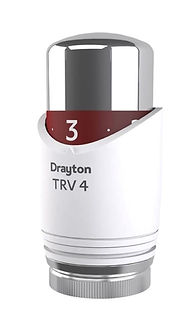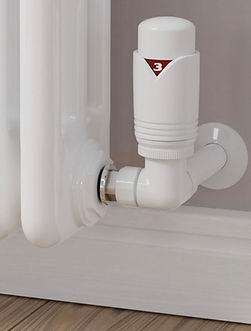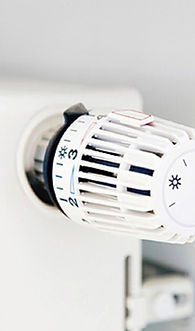System filters
Extend your boiler's & central heating system's lifespan with a magnetic filter
What is a magnetic filter?
A magnetic filter is a tool designed to gather sludge and debris that may accumulate within a central heating system. The majority of this sludge consists of rust particles that have deteriorated and detached from the interior of pipes or radiators. Comprising a sizable magnet, the magnetic filter draws in these particles, subsequently filtering them out of the system's water. This process effectively mitigates blockages and maintains efficient water flow throughout the central heating system.
Why would my heating system need a magnetic filter?
Metal components within central heating systems are susceptible to corrosion and rusting, leading to the accumulation of sludge over time. This buildup can obstruct various parts, particularly the heat exchanger, pump, or radiators and pipework of the system's boilers. While older cast iron heat exchangers had larger diameters, modern boilers and system components are typically narrower and more constricted, increasing the likelihood of sludge blockages. Such blockages often result in overheating of the boiler, prompting system shutdown. Remedying a blockage may require an engineer to conduct a power flush of the central heating system or replace the heat exchanger, both of which are costly endeavors. However, a magnetic filter can effectively prevent these blockages and ensure smooth system operation by capturing sludge before it reaches the boiler. Equipped with a potent magnet, these filters gather debris, shielding the boiler from damage. Furthermore, some models incorporate a filter to trap non-magnetic deposits resulting from the corrosion of copper, zinc, or aluminum central heating system components.
How can I install a magnetic filter?
When installing a new boiler, it is advisable to include a magnetic filter as well. Certain boiler manufacturers may even extend the boiler warranty if a magnetic filter is incorporated. Additionally, it is feasible to integrate a magnetic filter into an existing central heating system.
How do you maintain a magnetic filter?
Periodically, the accumulation of sludge within the filter necessitates removal. During your annual boiler service, we can perform the necessary cleaning of the filter.
Can system inhibitor chemicals prevent blockages?
An alternative approach to deter sludge accumulation involves introducing corrosion inhibitor fluid into the central heating system. It's crucial to maintain the appropriate dosage of inhibitor, as it is integral to boiler care, and some manufacturers mandate evidence of this to uphold the warranty validity. During your boiler's annual service, we can also assess the inhibitor levels.
In tandem with corrosion inhibitor fluid, a magnetic filter operates to uphold the performance and efficiency of your central heating system.
Please get in contact to get booked in or for any further information regarding:
- Magnetic system water filter installation & servicing
- Central heating system water quality testing, inhibitor chemical treatment, cleaning & flushing






Thermostatic Radiator Valve (TRV)






What is a Thermostatic Radiator Valve (TRV)?
A Thermostatic Radiator Valve represents an enhanced version of a manual radiator valve, and can enhance control over your heating, enabling you to optimise energy usage according to your needs. Here's how incorporating TRVs can contribute to environmentally conscious practices.
How does a thermostatic valve work?
A thermostatic radiator valve is the small device typically found on the side of your radiator. If you've ever been curious about what a TRV is and how it functions, it's quite straightforward. Essentially, by installing TRVs on your radiators, you can independently regulate the temperature in each room. These valves detect the room's temperature and adjust the radiator accordingly to maintain your desired level of warmth. TRVs have a numbered dial, usually from 0 to 5, with each number corresponding to a temperature range, typically:
* 1 = 10°C
* 2 = 15°C
* 3 = 20°C
* 4 = 25°C
* 5 = 30°C
This allows you to have a cozy living room set to 3 or 4, while the unoccupied spare room can be set to 1, and perhaps the already warm kitchen to 2. Adjusting the dial on the TRV in each room ensures that it's only as warm as you prefer. This increased control over your heating enables you to minimise energy consumption, ultimately leading to cost savings.
Okay, but how does a thermostatic valve actually work?
A Thermostatic Radiator Valve consists of a head and a body, responsible for regulating the water flow to your radiators. Once the room reaches the desired temperature, it prevents the radiators from further heating up.
As the room temperature fluctuates, the head expands, causing a pin to shift within the valve body.
* If the temperature is too hot, the valve closes and stops the hot water coming to the radiator
* If it is too cold, the valve opens and lets more hot water in to reach the set temperature
What’s the difference between a manual radiator valve and a TRV?
Manual radiator valves can solely turn radiators either on or off, whereas thermostatic radiator valves offer the capability to adjust the temperature within a specific range. Smart TRVs elevate this functionality by allowing you to precisely select the desired temperature.
What advantages do thermostatic radiator valves offer?
Enhanced Home Control:
By employing a TRV, you gain the ability to lower temperatures in less frequently used rooms while maintaining optimal temperatures in main living areas.
Leverage Natural Heat:
In rooms with expansive windows admitting ample natural light, additional warmth is provided. In such instances, the TRV detects this surplus heat and adjusts the radiator accordingly, conserving energy.
Energy Efficiency and Cost Savings:
One of the primary advantages of TRVs is their capacity to minimise heating in unused spaces, thereby reducing energy consumption and lowering utility bills.
If you're interested in enhancing the efficiency of your central heating system and cutting down on heating expenses, please don't hesitate to contact us for a no-obligation quotation.
Smart Heating Controls
Smart Heating Controls
The popularity of smart heating is growing among households in Britain due to its potential time and cost savings. This innovative approach allows for heating control via a smartphone, offering an advanced solution for homes and buildings. SMART stands for 'Self-Monitoring Analysis & Reporting Technology.' Smart heating systems are typically installed in the hallway or landing of a residence, as these areas often maintain a balanced temperature throughout the entire house or building. This guide aims to provide comprehensive information on smart heating systems.
What is a smart heating system?
A smart heating system offers an advanced method of regulating heating via a smartphone for residential or commercial spaces. It typically involves a thermostat with a multi-zone setup connected to a Wi-Fi network, enabling wireless and remote control of individual room temperatures. Additionally, smart thermostats can automatically adapt to external temperatures by gathering and analysing weather data, a feature known as weather compensation, ensuring comfort during fluctuating weather conditions. Depending on the specific smart heating system utilised, control can be managed through a smartphone app, tablet, computer, or remote control. This technology provides enhanced heating control, allowing adjustment from different rooms or remote locations. With a multi-zone setup, users have the flexibility to heat the entire premises or select specific individual rooms as needed. Furthermore, some smart thermostats can learn users' routines over time and offer suggestions for reducing energy bills.
How do smart thermostats work?
Smart thermostats establish connections with a home's Wi-Fi network and boiler through the existing wire connections, provided they adhere to the manufacturer's guidelines. Typically, the current boiler can seamlessly integrate into the smart home system. However, it's essential to verify with the manufacturer whether your boiler is compatible with the thermostat before selecting a smart heating system.
Moreover, the thermostat is linked to Wi-Fi, allowing temperature adjustments from any location within your home or remotely via a smartphone app. This process involves downloading a smart heating app and setting the desired temperature, which is then transmitted from your Wi-Fi network to the thermostat, initiating the adjustment. Subsequently, the thermostat communicates with the boiler, activating or deactivating it based on your preferences by sending signals accordingly.
Smart heating system features
-
Weather-responsive Functionality: Certain smart heating systems adjust their performance based on outdoor temperature conditions. When it's cold outside, the thermostat regulates heating to maintain your home's comfort level. This weather compensating feature assesses external conditions and instructs your boiler accordingly, optimising temperature attainment without unnecessary energy consumption.
-
Hot Water Management: Some smart heating systems offer control over both hot water and central heating, depending on your boiler type. For instance, if you have a combi boiler providing immediate water heating, this feature may not be necessary. Using the app, you can wirelessly adjust, schedule, and control hot water, similar to heating adjustments, from any location.
-
App and Computer Accessibility: Dedicated apps provide control over smart heating systems via smartphones or PCs, ensuring efficient utilisation for comfort and environmental conservation while reducing costs.
-
Multi-room Control or Zone Heating: Ideal for larger residences with infrequently used rooms, this feature enables setting individual temperatures for different zones. You can deactivate heating in rarely used rooms or adjust temperatures based on room usage patterns, either by installing separate thermostats for each zone or utilising smart thermostat radiator valves for room-specific control.
-
Energy Reporting: Access to energy reports from your thermostats offers valuable insights into heating expenditures and strategies for reduction, facilitating informed decisions to manage and minimise energy consumption effectively.
For anymore information, to upgrade your system with smart controls or to help save money on your energy bills then please get in contact.




Carbon Monoxide Alarms
Carbon Monoxide (CO) is a dangerous gas that lacks both odour and colour, making it exceedingly difficult to detect without proper equipment. According to the Department of Health, CO poisoning in homes contributes to approximately 50 fatalities annually in the UK, with up to 4,000 medical visits. This gas forms when fuel undergoes incomplete combustion, rendering appliances like boilers or gas fires particularly hazardous within residential settings. Consequently, it is strongly advised to have these fuel-burning appliances regularly inspected by a gas-safe registered engineer and to install an audible CO alarm nearby. Despite ongoing efforts, instances of CO poisoning persist, indicating a significant gap in awareness regarding this gas. Thus, it is crucial, especially for landlords, to educate tenants about the potential dangers of carbon monoxide and to implement necessary safety measures.
Carbon Monoxide legislation
In accordance with the Building Regulations Approved Document J for England and Wales, it is obligatory to install a carbon monoxide alarm "where a new or replacement fixed solid fuel appliance (e.g., wood and coal burning) is installed in a dwelling." Additionally, as per legislation implemented in October 2015, private residential landlords in England must fit a carbon monoxide alarm in any room containing a solid fuel appliance. Alongside annual safety checks on each appliance and flue, this requirement aims to ensure tenants are adequately safeguarded against fire and carbon monoxide exposure. Non-compliance with the legislation may result in landlords facing fines of up to £5,000.
Since October 2022, social housing providers are also subject to this carbon monoxide legislation. It mandates the installation of a smoke alarm on each storey of a property and a carbon monoxide alarm in any room featuring a fixed combustion appliance or upon fitting such an appliance. This includes boilers, fire and water heaters, while excluding gas cookers. Landlords are responsible for repairing or replacing alarms upon being notified of a fault, although regular alarm testing remains the duty of the resident.
Safeguarding tenants
Housing providers have a responsibility to safeguard tenants against the threat of carbon monoxide, which is undetectable without assistance. It's essential to prepare for forthcoming regulatory changes, as installing a CO alarm remains the sole measure to detect and prevent carbon monoxide poisoning effectively.
Here are some recommended best practices:
-
Install Carbon Monoxide alarms in every room containing a fuel-burning appliance.
-
Position ceiling-mounted alarms at least 300 mm away from any wall.
-
For wall-mounted alarms, position them at least 150 mm from the ceiling, above the height of any door or window.
-
Ensure alarms are located between 1 and 3 meters horizontally from the potential CO source.
According to the British Standard EN 50292:
-
Avoid fitting alarms in enclosed spaces or where they may be obstructed.
-
Refrain from installing alarms directly above sinks or near doors, windows, extractor fans, air vents, or similar ventilation openings.
-
Avoid areas where temperatures may drop below -5 ºC or exceed 40 ºC.
Selecting a Carbon Monoxide Detector:
When choosing a CO alarm, ensure it meets British Standard EN 50291 and bears a British or European approval mark, such as a Kitemark. Some of the latest CO alarms utilise intelligent wireless technology to connect all smoke, heat, and CO alarms within the property, providing tenants with an advanced level of protection. Consequently, if a carbon monoxide alarm triggers in the kitchen, interconnected alarms throughout the property will also sound, mimicking the triggered alarm's sound pattern. This allows tenants to take appropriate action, such as evacuating in response to a smoke alarm or ventilating the property and shutting off fuel-burning appliances in response to a CO alarm. Moreover, identifying the source of the sounding alarm (by silencing others) can be easily achieved either by pressing a button on the sounding alarm or utilising a control unit's 'locate function', enabling tenants to promptly identify and respond to the issue.
Stay Safe from the Silent Killer:
It is recommended for all landlords to install carbon monoxide alarms in rooms containing gas or fuel-burning appliances. This not only protects tenants from CO poisoning but also future-proofs landlords against potential legislative changes. Whether you're a homeowner or a landlord, it's crucial to ensure your property is equipped with adequate CO detectors to alert and safeguard against the potential dangers of carbon monoxide poisoning.
Please feel free to contact us to have Carbon Monoxide Alarms installed at your property promptly.


Other system upgrades we cover

DJT Gas Services Ltd can also cover a range of other system upgrades including:
-
Vented / Unvented cylinders
-
System pumps
-
Hot and cold pipework
-
Heating controls
-
Kitchen and bathroom tap replacements
-
Mixer showers
For System Upgrades, Call DJT Gas Services Ltd On 07957 112597 To Discuss Your Requirements. We cover Penzance and West Cornwall.




